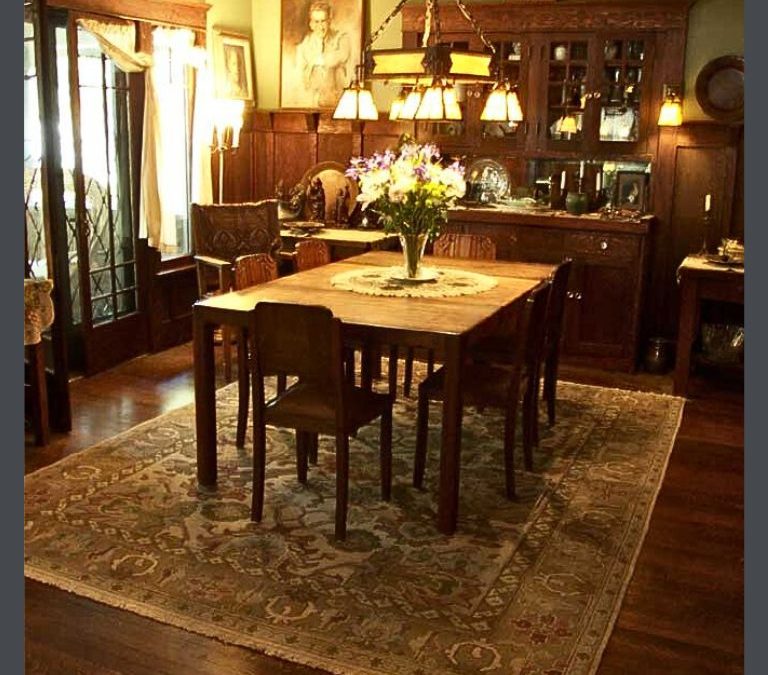
by bungalow101 | May 1, 2024 | ALL AROUND, Preservation groups
 The association has sent out notices of the meeting; you have trotted about the neighborhood, sticking fliers in the doors of all the residents & posters in the windows of all the businesses; you have communicated on an individual basis with everyone you know, inviting them to come, urging them to tell others, & you have a few RSVP’s.
The association has sent out notices of the meeting; you have trotted about the neighborhood, sticking fliers in the doors of all the residents & posters in the windows of all the businesses; you have communicated on an individual basis with everyone you know, inviting them to come, urging them to tell others, & you have a few RSVP’s.
You have watched the video that you will show at the first meeting several times & you have worked out the important points are. You will discuss these points in your first meeting.
You have reviewed the glossary & have gotten any questions about any of the terms answered. You feel like you have some familiarity with all of them.
You have figured out where to seat everyone, put out some lemonade & snacks & have the T.V. connected to YouTube. You have created your sign-in sheet (Name, phone # & email address) & gathered a couple pens, & set them out where they are easy to see. I’m a big fan of name tags. When you are trying to learn the name of more than one person (or heck, even one!) it is handy to have a visual aid. Simple mailing labels will do fine.
HERE’S YOUR AGENDA
1. Greeting & welcome. What do you do when the people arrive? Ask each person to write his/her/their name on the tag & the style of house in which they live. Request that they sign in.
We have always started with a brief tour of the host’s house. (I’m going to assume that you are the host for the first meeting.) Take them through the architectural features important to the period, the restoration you have done, & tell them about any house history you have uncovered. Invite them into the room where the meeting will be held & point them to the snacks. We often sat at the host’s dining table. It is a cozy & intimate space & allows everyone to speak & be heard by everyone.
2. Introductions. When the last stragglers have arrived, go around the table for introductions. Start with yourself, stating your interest in preservation, & any training or experience you might have. Ask each one in turn about their interests. (Be on the lookout for people with experience & follow up personally with them. They may be your new best friend!) Ask how they wish to benefit from being part of a preservation committee. What do they want to learn? How do they wish to contribute? Take notes. This is important!
 3. The video. Introduce this video. The speaker, Rhonda Sincavage works with The National Trust for Historic Preservation, a privately funded, nonprofit organization, that has led the movement to save America’s historic places for over 70 years.
3. The video. Introduce this video. The speaker, Rhonda Sincavage works with The National Trust for Historic Preservation, a privately funded, nonprofit organization, that has led the movement to save America’s historic places for over 70 years.
Play the video. Go through the points that you have noted as important & ask for discussion. Ask if there is anything that she mentioned that they would like to know more about.
4. Intro to The Secretary’s Standards & Guildelines. The U.S. Department of the Interior protects & manages our country’s natural resources & cultural heritage, providing scientific & other information about those resources. A body of information, researched & formulated by top preservationists, The Secretary of the Interior’s Standards for the Treatment of Historic Properties, was written to provide guidance to historic building owners & building managers, preservation consultants, architects & contractors prior to beginning work.
Tell the group that this is the basis of historic preservation in the United States. We are going to learn more about it, & how it is applied next week.
5. More Q&A time. Ask if anyone has any questions or comments. Invite them to stick around to munch & chat. This gently adjourns the meeting, while encouraging people to stick around.
Let me know if you should have any questions about what to do so far.
READ THESE ARTICLES TO LEARN MORE!
NEIGHBORHOOD HISTORIC PRESERVATION COMMITTEES- BUILDING COMMUNITY
 BASIC HISTORIC PRESERVATION GLOSSARY OF TERMS
BASIC HISTORIC PRESERVATION GLOSSARY OF TERMS
NEIGHBORHOOD PRESERVATION COMMITTEE MEMBERSHIP ACTIVITIES
PUBLIC EVENTS THAT CAN BE PRODUCED BY YOUR HISTORIC PRESERVATION COMMITTEE
MAKING YOUR NEIGHBORHOOD PRESERVATION COMMITTEE WELL KNOWN
WHAT IS A HISTORIC DESIGNATION, ANYWAY?

STAY IN THE BUNGALOW KNOW!!!
Sign up for our newsletter & receive our FREE E-book, 7 VITAL Things to Do Before You Hire a Contractor.

by bungalow101 | Apr 10, 2024 | ALL AROUND, Preservation groups, Uncategorized
NOTE: This is not an article about the benefits nor the drawbacks of historic designations. This is just information about what they are. I have included many links in case you would like to know more.
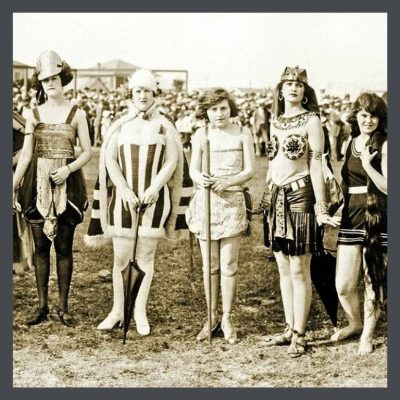 First, let’s look at a common misconception about historical societies. Historical societies traditionally are 501 (c)(3)’s, non-profit, charitable organizations, dedicated to collecting, preserving, interpreting, & promoting the history of a city or sometimes a neighborhood, in photographs, documents, artifacts & recordings. They focus on research, education & creating awareness of the cultural & architectural history of the area. They generally host educational events, lectures, workshops, tours & exhibitions which display their archived materials & teach the community about the culture of bygone years. They offer these materials to academics & the public for research. Many societies own & run museums.
First, let’s look at a common misconception about historical societies. Historical societies traditionally are 501 (c)(3)’s, non-profit, charitable organizations, dedicated to collecting, preserving, interpreting, & promoting the history of a city or sometimes a neighborhood, in photographs, documents, artifacts & recordings. They focus on research, education & creating awareness of the cultural & architectural history of the area. They generally host educational events, lectures, workshops, tours & exhibitions which display their archived materials & teach the community about the culture of bygone years. They offer these materials to academics & the public for research. Many societies own & run museums.
They have nothing to do with establishing historic districts, other than providing materials for research & sometimes, provide advice as to the process. They do not make rules or statutes. They do not participate in enforcing rules or statutes. This is done by governing bodies.
For example, The Eagle Rock Valley Historical Society was very helpful in my research to have the Hare House designated. They had archived material about the house, the family & the neighborhood that was very useful.
CRITERIA FOR HISTORIC DESIGNATION
- To be designated at any level, a structure or area, must be associated with events that have greatly contributed to the history of a city, state or to our nation.
- Have some association with a person who is significant in the history of a city, state or our nation.
- Display the characteristics of a particular type, period, or method of construction. A great example of this is bungalows! The structure might be the work of a master, or it might possess highly artistic values.
- If you were to study this structure or group of structures, it would show you information important in prehistory or history.
A building or group of buildings, would need to possess one or more of these attributes in order to be considered for inclusion.
 The basis of historic preservation in the United States is The Secretary of the Interior’s Standards for the Treatment of Historic Properties with Guidelines for Preserving, Rehabilitating, Restoring & Reconstructing Historic Buildings, (Each explained in the PRESERVATION GLOSSARY here.) which provides guidance to historic building owners & building managers, preservation consultants, architects, contractors, & project reviewers prior to beginning work. It explains how to repair & maintain historic materials & provides the basis for many design guidelines in many cities. The basic philosophy of The Standards is best expressed in the definition of rehabilitation – “the process of returning a property to a state of utility through repair or alteration which makes possible an efficient contemporary use while preserving those portions & features of the property which are significant to its historic, architectural & cultural values.” It encourages & provides technical data for respecting the original character of each historic structure, while allowing for updating for functionality & safety.
The basis of historic preservation in the United States is The Secretary of the Interior’s Standards for the Treatment of Historic Properties with Guidelines for Preserving, Rehabilitating, Restoring & Reconstructing Historic Buildings, (Each explained in the PRESERVATION GLOSSARY here.) which provides guidance to historic building owners & building managers, preservation consultants, architects, contractors, & project reviewers prior to beginning work. It explains how to repair & maintain historic materials & provides the basis for many design guidelines in many cities. The basic philosophy of The Standards is best expressed in the definition of rehabilitation – “the process of returning a property to a state of utility through repair or alteration which makes possible an efficient contemporary use while preserving those portions & features of the property which are significant to its historic, architectural & cultural values.” It encourages & provides technical data for respecting the original character of each historic structure, while allowing for updating for functionality & safety.
It is this original character, (See character-defining features in the glossary.) either from the period or sensitively repaired or reconstructed, of a single structure, site object or of an area, which forms the criteria for designation.
A SINGLE STRUCTURE DESIGNATION
A house, a church, a public building, a site or an object such as a fountain or a bridge, can be designated as historic based on its significance in history, its relationship to an important figure in history, or its architecture. The Hare House was awarded Los Angeles & California landmark statuses because the Hare’s contributed greatly to the local community & were active in other areas of the state & because the style of the house contributed to the bungalow character of the neighborhood.
HISTORIC DISTRICTS
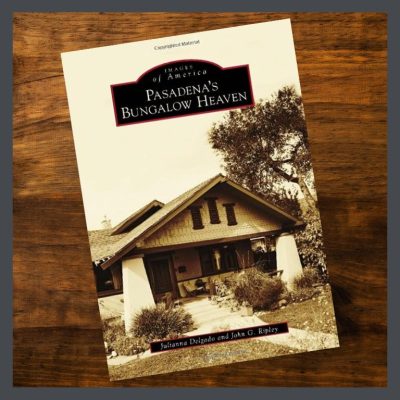 There are several types of historic districts. One thing that it is not is a historic neighborhood. A historic neighborhood is area in which there are many older houses. To be considered a historic district, the neighborhood must be designated as such by a governing body at some level.
There are several types of historic districts. One thing that it is not is a historic neighborhood. A historic neighborhood is area in which there are many older houses. To be considered a historic district, the neighborhood must be designated as such by a governing body at some level.
A historic district is an area which has a significant concentration of sites, buildings, structures, or objects, urban or rural, that are united by period (or periods) or style (or styles) or important events. Based on these factors, it has been designated as such by a city, state or federal body (or all of them!) as historic.
One of the most well-known areas so designated is Bungalow Heaven in Pasadena, California. It is a charming area filled with bungalows of every style, shape & size that draws visitors from all over the United States to its annual home tour.
LEVELS OF HISTORIC DESIGNATION
LOCAL (City)
This level, through the means of a preservation ordinance, provides properties with a degree of protection from unnecessary demolition or alterations (generally only exterior) that damage or destroy the character of the building. A guideline for a particular area is written specifically for the history & individual architectural styles of that area, based on the Secretary’s Standards.
Many cities have individual guidelines for each neighborhood that are tailored to the design features of that area. These guidelines are very educational, generally covering building anatomy, basic construction & clear descriptions & photos of the different styles found in the neighborhood.
Historic preservation staff or boards, made of citizens, conduct reviews of proposed changes to locally designated properties.
STATE
Though differing from state-to-state, listing here triggers limited regulatory protection from state government actions. Many states offer state funding, tax benefits, or other incentives. The owners of the Hare house, on the California register, enjoy a sizeable break on their state property taxes. Additionally, if any repairs are made, in most states, the local building inspector must grant code alternatives provided under the State Historic Building Code. I am not even going to try to explain what that is because it varies from state to state. Follow this link to see what the National Park Service says about building & safety codes.
NATIONAL DESIGNATION
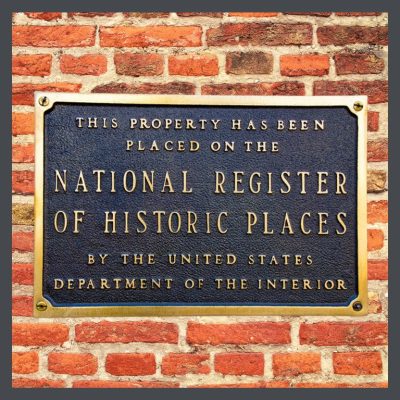 These structures, sites, objects or areas which must be a minimum of 50 years old, have a strong association with a significant event or events in the history of our country, not just a section of the country; have an association with & tell the story of a person or group of persons who strongly affected that history; are an outstanding example of a type of structure or group of structures; & hold lessons about our nation’s history that can be learned through the study of the structures or districts.
These structures, sites, objects or areas which must be a minimum of 50 years old, have a strong association with a significant event or events in the history of our country, not just a section of the country; have an association with & tell the story of a person or group of persons who strongly affected that history; are an outstanding example of a type of structure or group of structures; & hold lessons about our nation’s history that can be learned through the study of the structures or districts.
The National Park Service, in the U.S. Department of the Interior, manage 2 programs. The first is the National Historic Landmarks (NHL) Program. The second is listing on the National Register of Historic Places (NR.)
Something that heartbroken neighborhoods have realized only after they have lost properties to development, is that neither NHL nor NR designations affect what private owners can do with their property. Both do offer protections in the event that federal government work threatens a place, for example, the destruction of whole neighborhoods to make way for the building of a federal highway. They also offer preservation funds & federal historic tax credits that can help offset the costs of rehabilitation. You would need to contact them to see if you might qualify.
Please let me know if there is anything more you want to know about historic districts!
READ MORE ABOUT NEIGHBORHOOD PRESERVATION COMMITTEES!
NEIGHBORHOOD HISTORIC PRESERVATION COMMITTEES- BUILDING COMMUNITY
BASIC HISTORIC PRESERVATION GLOSSARY OF TERMS
NEIGHBORHOOD PRESERVATION COMMITTEE MEMBERSHIP ACTIVITIES
PUBLIC EVENTS THAT CAN BE PRODUCED BY YOUR HISTORIC PRESERVATION COMMITTEE
MAKING YOUR NEIGHBORHOOD PRESERVATION COMMITTEE WELL KNOWN
 AGENDA FOR YOUR FIRST NEIGHBORHOOD PRESERVATION COMMITTEE MEETING
AGENDA FOR YOUR FIRST NEIGHBORHOOD PRESERVATION COMMITTEE MEETING

STAY IN THE BUNGALOW KNOW!!!
Sign up for our newsletter & receive our FREE E-book, 7 VITAL Things to Do Before You Hire a Contractor.
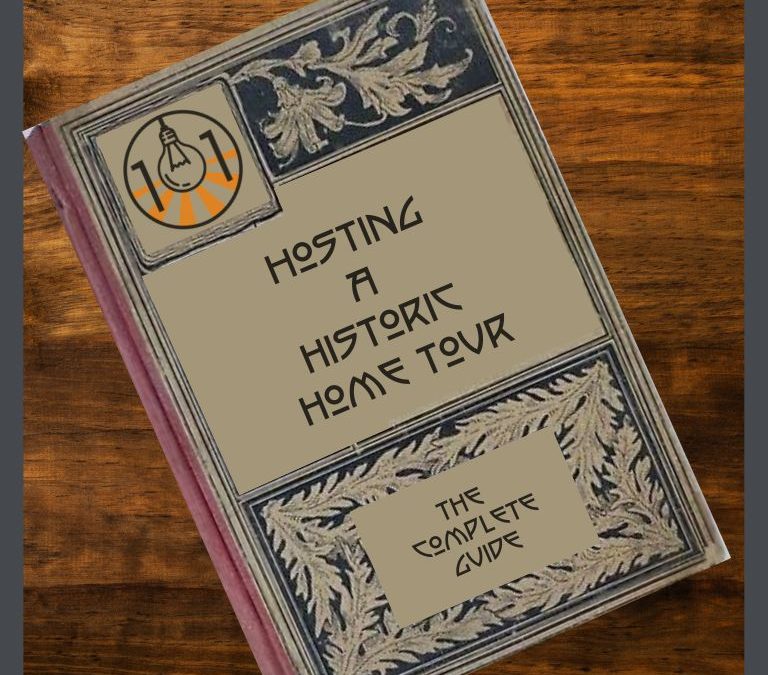
by bungalow101 | Apr 2, 2024 | ALL AROUND, Preservation groups
 Leading a preservation committee presents the same challenges as leading any activity. To be successful at it, you need to take a look at what might motivate someone to work a 40+ hours a week job, to care for a home & a family & then to go “work” in a volunteer position in their rare & precious free moments. While their friends are enjoying the festivities!
Leading a preservation committee presents the same challenges as leading any activity. To be successful at it, you need to take a look at what might motivate someone to work a 40+ hours a week job, to care for a home & a family & then to go “work” in a volunteer position in their rare & precious free moments. While their friends are enjoying the festivities!
The prime motivator for anyone to perform any activity is purpose, the impact we want to have on the world. For example, my own purpose is twofold. I love local history & culture. In my free time, I visit museums, old house museums, research & write my blog. My first strong purpose is to better understand & preserve our built environment. My second, stronger now that I am approaching my 80’s, is to encourage & guide others in effectively participating in these activities.
The next most powerful reason to go traipsing off to a meeting when others are nestled comfortably in front of their TV’s, is to find fellowship with those who share our passions & purposes. I consider preservationists to be my peeps. When I moved from L.A. to Tampa, the head of my neighborhood preservation committee became my instant best friend. We did not need time to get acquainted, we just knew each other.
The key to leading a preservation committee is to fulfill these wants. Provide direction toward achieving purpose & the fellowship will follow.
MY EXPERIENCES
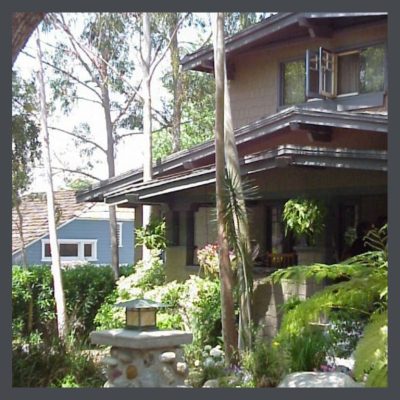 I was fortunate to have served under some inspiring leaders. Here’s what I learned from them.
I was fortunate to have served under some inspiring leaders. Here’s what I learned from them.
1. Have a clear statement of purpose or purposes that inspires action.
My first venture in neighborhood preservation was participating in a home tour committee. The purpose of this committee was to display our beautiful, historic residential areas, hidden behind our blighted commercial corridors. We wanted to eradicate the blight. We wanted the world to love our beautiful neighborhood as much as we did.
I’m going to use this home tour committee as an example because there were several well-defined tasks & positions.
BREAKING IT DOWN
We knew what we wanted the committee to accomplish & we formulated a plan of how to do this- host a lovely tour like neighboring Bungalow Heaven in Pasadena. They were famous!
We broke down the tour purpose into its parts. We wanted:
1. Beautiful houses to show who we really were.
2. The houses to look their best.
3. Attendees to have a delightful & educational experience.
4. Attendance is huge!!!!!!!!!!
5. A nice brochure that described each house & its history & an accurate map.
6. Marketing materials that presented our neighborhood in its best light.
WHO’S WHO IN THE ZOO
 We knew what we wanted to accomplish. The next was to delineate the tasks & then assign single people or subcommittees for each task, ensuring that they knew the purpose of the subcommittee & how it contributed to the allover purpose.
We knew what we wanted to accomplish. The next was to delineate the tasks & then assign single people or subcommittees for each task, ensuring that they knew the purpose of the subcommittee & how it contributed to the allover purpose.
From knowing our purposes & copying Bungalow Heaven’s wonderful tour, we were able to see what the pieces of the home tour were that formed the whole picture & what actions were required to be done to create each piece. This guided the setting up of the structure of our committee.
Here’s are the some of positions that we had, based on what we wanted to achieve:
Chair– Oversees the committee & ensures tasks are being completed. Runs the meetings according to the agenda.
Secretary– Creates the weekly agenda. (More on that later.) Takes minutes during meetings & sends to each member.
Organizer– Creates the timeline, the training materials for each position, ensures that everyone knows what they are doing & is having a good time.
Volunteer coordinator– Builds the committee. With Chair, assigns tasks.
Treasurer– Handles income & outgoing as directed by the Chair, in coordination with the board Treasurer.
PR. & marketing– Makes to tour committee well known, attracting active members. Creates huge interest in the event through the use of compelling marketing materials.
I’m going to stop here. We had other positions, but this should give you an idea.
RUNNING THE ZOO
A well-run zoo requires each person knowing where they fit. When we first started, we were a small group & many people held many positions. What made our tour a success was that each task/position was well-defined as to purpose. The steps of how to achieve that purpose were clearly described, in sequence. Each team member knew where their tasks fit into the allover timeline.
People volunteered for things with which they were familiar & had some expertise. Our Chair had worked in the Bungalow Heaven tour for several years & had an allover idea of how a tour should go. Our Treasurer was a bookkeeper by vocation. Our P.R. was a trained, pro P.R. Our Volunteer Coordinator had headed many successful non-profits. Our Organizer, me, had run a construction business for years, creating business plans, writing training materials, etc. Our Secretary was new to the task so I created a template for her by which she could easily track the meeting.
Everyone knew what they were supposed to do & had guidelines for how to do it. If someone needed help, such as more information or more hands, they asked for it. Otherwise, we stayed in our own lanes & met every other week to co-ordinate.
PRIDE OF OWNERSHIP
This is the key to good leadership- giving someone a well-defined task & letting them run with it. In a volunteer organization, nobody is there for the paycheck. They are there because they believe strongly in the purpose of the activity. Occasionally leadership will have to step in, but I have seen this occur only once in any group I’ve been involved with, where the help was not requested. (We had a rogue member who surprised us a couple times with some wild shenanigans.)
Giving someone a task & not letting them complete it, leads to heartbreak. It is tempting to want everything done exactly, as you would do it, & decide to leap in. Be warned that it will weaken your team & loose you willing team members if you do not allow them to contribute. Delineate the task & hand it over.
If a volunteer on your team is doing a bad job, have a chat with them & see what the problem is. Otherwise, occasionally inquire if anyone might like some help or assistance, & if not, allow them to proceed.
A related subject to this is showing appreciation for work well done. I made sure that my team’s contributions were acknowledged whenever possible- in event programs, in association newsletters, on the website, at every committee meeting, at neighborhood association meetings. I was impressed by & grateful for the wisdom & assistance that I received from everyone & made sure that they & the world knew it at every opportunity.
APPLYING THIS TO A PRESERVATION COMMITTEE
Begin by deciding what the purpose of your committee is. Take a look at my lists of activities & choose which ones might help you accomplish that purpose. Work out the steps you need to take to do that activity. My almost complete manual on producing a historic homes workshop might give you guidance also. You could even just follow the bouncing ball & go ahead & produce a workshop! Contact me & I’ll send you a pdf of the manual. If you don’t want to start off such a huge endeavor, hosting a film night might be a good first event. Try it! If you need any help, let me know.
READ THESE ARTICLES TO LEARN HOW TO START & RUN A SUCCESSFUL PRESERVATION COMMITTEE
NEIGHBORHOOD PRESERVATION COMMITTEES- BUILDING COMMUNITIES
NEIGHBORHOOD PRESERVATION COMMITTEE MEMBERSHIP ACTIVITIES
PUBLIC EVENTS THAT CAN BE PRODUCED BY YOUR NEIGHBORHOOD PRESERVATION COMMITTEE
MAKING YOUR NEIGHBORHOOD HISTORIC PRESERVATION COMMITTEE WELL KNOWN
AGENDA FOR YOUR FIRST NEIGHBORHOOD PRESERVATION COMMITTEE MEETING
BASIC HISTORIC PRESERVATION GLOSSARY OF TERMS
WHAT IS A HISTORIC DESIGNATION, ANYWAY?

STAY IN THE BUNGALOW KNOW!!!
Sign up for our newsletter & receive our FREE E-book, 7 VITAL Things to Do Before You Hire a Contractor.
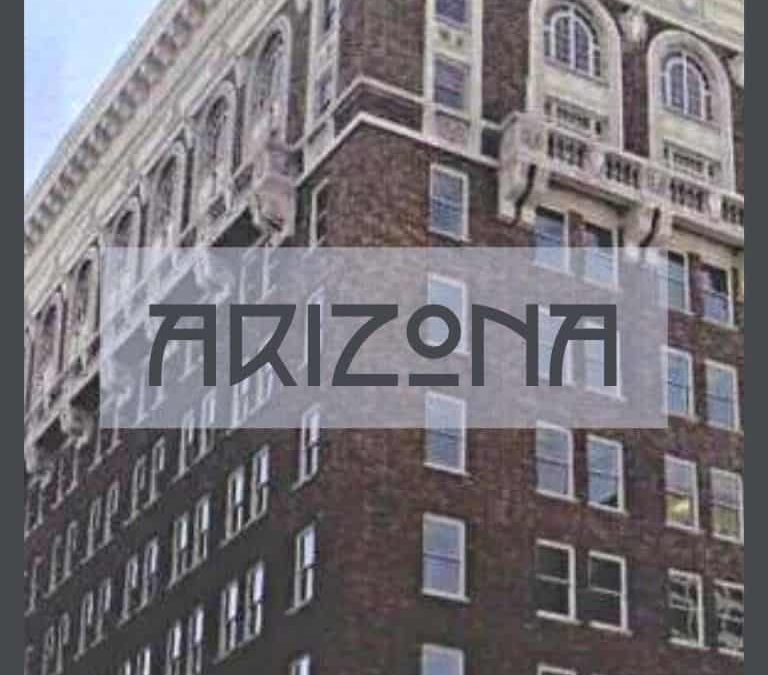
by bungalow101 | Jan 23, 2024 | Preservation groups
 Arizona preservation advocacy groups are facing huge challenges as developers eye their historic neighborhoods. There is little protection from state or city statutes. They need your help. If you live in Arizona & curse the wrecking ball, as my old friend, Jane Powell said, “DO SOMETHING ABOUT IT!”
Arizona preservation advocacy groups are facing huge challenges as developers eye their historic neighborhoods. There is little protection from state or city statutes. They need your help. If you live in Arizona & curse the wrecking ball, as my old friend, Jane Powell said, “DO SOMETHING ABOUT IT!”
You will learn a great deal about your area, meet some wonderful, committed people & have great adventures like I did!
STATEWIDE PRESERVATION ADVOCACY GROUPS
 Arizona Preservation Foundation
Arizona Preservation Foundation
Arizona Preservation Foundation is a preservation advocacy group that works with local, state, & national partners to promote & protect Arizona’s historic resources. They have partnered with the State Historic Preservation Office to present the Governor’s Heritage Preservation Honor Awards & host the Arizona Historic Preservation Conference geared to professionals, in the fields of historic preservation, archaeology, cultural resources management, architecture, and planning. They offer speakers who will appear at your events or meetings. Their page is a terrific resource for preservation information.\n\n
MESA
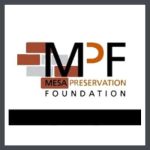 Mesa Preservation Foundation
Mesa Preservation Foundation
The Mesa Preservation Foundation works to protect the irreplaceable public, private & commercial historic buildings & neighborhoods in Mesa. Their website includes a beautiful list of reasons as to why preservation matters, as well as a link to the City’s list of historic buildings- standing, demolished or endangered. They have some wonderful educational programs that cover various areas of the state that you can access through their Facebook page.
TUCSON
 Tucson Historic Preservation Foundation
Tucson Historic Preservation Foundation
“Saving Tucson’s Places”
The focus of this highly effective preservation advocacy group in Southern Arizona is on saving Tucson’s heritage & cultural resources, protecting the places that make Tucson unique, through lectures, tours & films.They depend on their membership to assist them with their various programs & activities.
VAIL
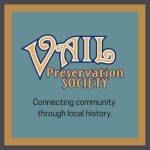 Vail Preservation Society
Vail Preservation Society
“Connecting community through local history.”
The Society works to preserve the heritage & historic resources the area, participating in the Arizona Main Street Program.
They are actively seeking people to assist them in their research, preservation & education efforts, gathering oral histories, saving historic structures & honoring the roots of the community. It sounds like a wonderful opportunity to meet great people & help your community.
 STAY IN THE BUNGALOW KNOW!!!
STAY IN THE BUNGALOW KNOW!!!
Sign up for our newsletter & receive our FREE E-book, 7 VITAL Things to Do Before You Hire a Contractor.

by bungalow101 | Jan 20, 2024 | Preservation groups
 The preservation advocacy groups of Northern California protect some of the most iconic structures in America & face many of the same challenges as other areas of the country.
The preservation advocacy groups of Northern California protect some of the most iconic structures in America & face many of the same challenges as other areas of the country.
We are fortunate that they have several strong groups working to educate & legislate for their built environment.
They need your participation which will increase your knowledge of your state & enrich your life.
SAN FRANCISCO
 San Francisco Heritage
San Francisco Heritage
https://www.sfheritage.org/
San Francisco is rich in the culture of many groups, each of whom has many valuable representations of their built heritage.
San Francisco Heritage is one of the most effective preservation advocacy groups in Northern California, dedicated to preserving the built tale of these intermingled cultures that contributed to the city it is today.
They accomplish this through advocacy, education & the ongoing care of two landmarked historic properties. Help them preserve the history of this vibrant city!
 SAN JOSE
SAN JOSE
Preservation Action Council of San Jose
https://www.preservation.org/
San Jose, founded way back in 1777 was California’s first civilian settlement. Today, its historic buildings and neighborhoods are at risk from both neglect & demolition.
Preservation Action Council of San Jose is a preservation advocacy membership organization in Northern California, working to preserve the unique cultural heritage of San Jose through advocacy, education, and civic engagement. Give them a ring & find out how you can help.
 STAY IN THE BUNGALOW KNOW!!!
STAY IN THE BUNGALOW KNOW!!!
Sign up for our newsletter & receive our FREE E-book, 7 VITAL Things to Do Before You Hire a Contractor.
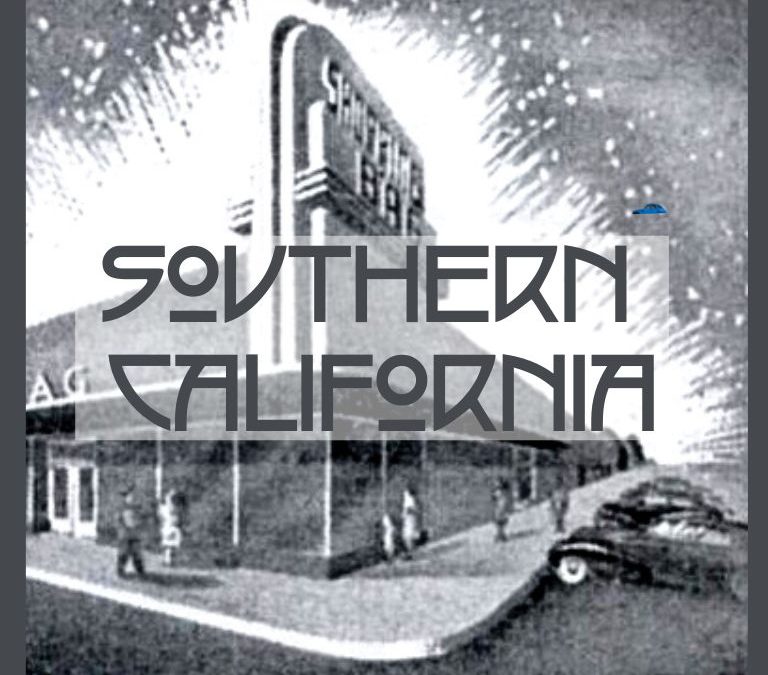
by bungalow101 | Jan 19, 2024 | Preservation groups
 Though this image is of one we lost, he preservation advocacy groups in Southern California have been very effective in educating & influencing both the public & government bodies despite the financial & political challenges.
Though this image is of one we lost, he preservation advocacy groups in Southern California have been very effective in educating & influencing both the public & government bodies despite the financial & political challenges.
They still need your help!
LOS ANGELES
 Echo Park Historical Society
Echo Park Historical Society
Echo Park Lake was originally a reservoir for drinking water. The surrounding park was first landscaped in 1892, & by the 1920s the building boom had brought new homes & community centers to the area.
They offer restoration tips, hands-on workshops & advice on historic tax credits.
 Los Angeles Conservancy
Los Angeles Conservancy
Unleash Your Inner Preservationist
The leading preservation advocacy group in Southern California, the Conservancy works throughout L.A. County- 88 cities plus the County’s unincorporated areas.
Their focus on raising awareness of historic places has resulted in great success in stopping their destruction through strong preservation laws & incentives.
MONROVIA
 Monrovia Historic Preservation Group
Monrovia Historic Preservation Group
Preserving Monrovia’s Architectural Heritage
Monrovia, incorporated In 1887 is one of the oldest towns in the San Gabriel Valley, in Los Angeles County. With a charming old downtown Monrovia boast 2 historic districts which protect its stock of homes which are primarily bungalows.
The group’s activities include walking tours of downtown Monrovia & includes a history of the downtown area as well as the history of Monrovia itself.
PASADENA
 Bungalow heaven Neighborhood Association
Bungalow heaven Neighborhood Association
BHNA is a crackerjack, non-profit organization of volunteers dedicated to the preservation of the homes in its district. Its signature hour tour, only one of the group’s many activities, is a finely-tuned & well-oiled machine, introducing hundreds of people to the charm of bungalows every year.
 Pasadena Heritage
Pasadena Heritage
The second largest preservation organization in the state, Pasadena Heritage has done an outstanding job of protecting this beautiful city’s cultural resources.
Their tours are enchanting & informative as are their educational events.
SAN DIEGO
 Save Our Heritage Organization
Save Our Heritage Organization
SOHO, a highly effective, countywide historic preservation organization, was formed in 1969 to save a single home, the 1887 Sherman Gilbert House.
Working both proactively & in response to specific threats to historic cultural & architectural resources. SOHO promotes strong preservation laws & incentives, as well as education through tours & events & the supporting of museums.
 STAY IN THE BUNGALOW KNOW!!!
STAY IN THE BUNGALOW KNOW!!!
Sign up for our newsletter & receive our FREE E-book, 7 VITAL Things to Do Before You Hire a Contractor.

 The association has sent out notices of the meeting; you have trotted about the neighborhood, sticking fliers in the doors of all the residents & posters in the windows of all the businesses; you have communicated on an individual basis with everyone you know, inviting them to come, urging them to tell others, & you have a few RSVP’s.
The association has sent out notices of the meeting; you have trotted about the neighborhood, sticking fliers in the doors of all the residents & posters in the windows of all the businesses; you have communicated on an individual basis with everyone you know, inviting them to come, urging them to tell others, & you have a few RSVP’s. 3. The video. Introduce this video. The speaker, Rhonda Sincavage works with The National Trust for Historic Preservation, a privately funded, nonprofit organization, that has led the movement to save America’s historic places for over 70 years.
3. The video. Introduce this video. The speaker, Rhonda Sincavage works with The National Trust for Historic Preservation, a privately funded, nonprofit organization, that has led the movement to save America’s historic places for over 70 years.![]()
![]() BASIC HISTORIC PRESERVATION GLOSSARY OF TERMS
BASIC HISTORIC PRESERVATION GLOSSARY OF TERMS![]()
![]()
![]()
![]()




 First, let’s look at a common misconception about historical societies. Historical societies traditionally are 501 (c)(3)’s, non-profit, charitable organizations, dedicated to collecting, preserving, interpreting, & promoting the history of a city or sometimes a neighborhood, in photographs, documents, artifacts & recordings. They focus on research, education & creating awareness of the cultural & architectural history of the area. They generally host educational events, lectures, workshops, tours & exhibitions which display their archived materials & teach the community about the culture of bygone years. They offer these materials to academics & the public for research. Many societies own & run museums.
First, let’s look at a common misconception about historical societies. Historical societies traditionally are 501 (c)(3)’s, non-profit, charitable organizations, dedicated to collecting, preserving, interpreting, & promoting the history of a city or sometimes a neighborhood, in photographs, documents, artifacts & recordings. They focus on research, education & creating awareness of the cultural & architectural history of the area. They generally host educational events, lectures, workshops, tours & exhibitions which display their archived materials & teach the community about the culture of bygone years. They offer these materials to academics & the public for research. Many societies own & run museums. The basis of historic preservation in the United States is The Secretary of the Interior’s Standards for the Treatment of Historic Properties with Guidelines for Preserving, Rehabilitating, Restoring & Reconstructing Historic Buildings, (Each explained in the
The basis of historic preservation in the United States is The Secretary of the Interior’s Standards for the Treatment of Historic Properties with Guidelines for Preserving, Rehabilitating, Restoring & Reconstructing Historic Buildings, (Each explained in the  There are several types of historic districts. One thing that it is not is a historic neighborhood. A historic neighborhood is area in which there are many older houses. To be considered a historic district, the neighborhood must be designated as such by a governing body at some level.
There are several types of historic districts. One thing that it is not is a historic neighborhood. A historic neighborhood is area in which there are many older houses. To be considered a historic district, the neighborhood must be designated as such by a governing body at some level. These structures, sites, objects or areas which must be a minimum of 50 years old, have a strong association with a significant event or events in the history of our country, not just a section of the country; have an association with & tell the story of a person or group of persons who strongly affected that history; are an outstanding example of a type of structure or group of structures; & hold lessons about our nation’s history that can be learned through the study of the structures or districts.
These structures, sites, objects or areas which must be a minimum of 50 years old, have a strong association with a significant event or events in the history of our country, not just a section of the country; have an association with & tell the story of a person or group of persons who strongly affected that history; are an outstanding example of a type of structure or group of structures; & hold lessons about our nation’s history that can be learned through the study of the structures or districts.
 Leading a preservation committee presents the same challenges as leading any activity. To be successful at it, you need to take a look at what might motivate someone to work a 40+ hours a week job, to care for a home & a family & then to go “work” in a volunteer position in their rare & precious free moments. While their friends are enjoying the festivities!
Leading a preservation committee presents the same challenges as leading any activity. To be successful at it, you need to take a look at what might motivate someone to work a 40+ hours a week job, to care for a home & a family & then to go “work” in a volunteer position in their rare & precious free moments. While their friends are enjoying the festivities! I was fortunate to have served under some inspiring leaders. Here’s what I learned from them.
I was fortunate to have served under some inspiring leaders. Here’s what I learned from them. We knew what we wanted to accomplish. The next was to delineate the tasks & then assign single people or subcommittees for each task, ensuring that they knew the purpose of the subcommittee & how it contributed to the allover purpose.
We knew what we wanted to accomplish. The next was to delineate the tasks & then assign single people or subcommittees for each task, ensuring that they knew the purpose of the subcommittee & how it contributed to the allover purpose.
 Arizona preservation advocacy groups are facing huge challenges as developers eye their historic neighborhoods. There is little protection from state or city statutes. They need your help. If you live in Arizona & curse the wrecking ball, as my old friend, Jane Powell said, “DO SOMETHING ABOUT IT!”
Arizona preservation advocacy groups are facing huge challenges as developers eye their historic neighborhoods. There is little protection from state or city statutes. They need your help. If you live in Arizona & curse the wrecking ball, as my old friend, Jane Powell said, “DO SOMETHING ABOUT IT!”


 Vail Preservation Society
Vail Preservation Society
 The preservation advocacy groups of Northern California protect some of the most iconic structures in America & face many of the same challenges as other areas of the country.
The preservation advocacy groups of Northern California protect some of the most iconic structures in America & face many of the same challenges as other areas of the country. San Francisco Heritage
San Francisco Heritage SAN JOSE
SAN JOSE
 Though this image is of one
Though this image is of one 




